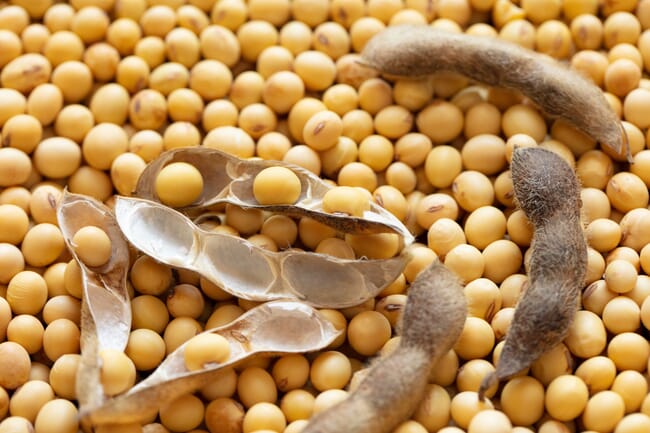
For example, soybean meal is abundant, yet unpalatable to many fish species © Shutterstock
Led by Dr Brett Glencross, technical director of IFFO - an aquafeed ingredients organisation - alongside a cohort of world renowned fish nutritionists, a large-scale review of current progress towards alternative protein sources for aquafeeds has just been published in Reviews in Fisheries Science and Aquaculture.
As concerns over the environmental responsibility and sustainability of aquaculture supply chains have increased, the aquafeed ingredients sector has been exposed to growing scrutiny. Aquafeed producers have, in turn, attempted to meet the expectations of their consumers by adopting a range of alternative aquafeed ingredients, such as alternative animal proteins (insect and worm meals, and by-products from meat processing), single-cell protein resources (produced from bacteria, fungi, or microalgae), and grain protein sources, such as cereals, oilseeds, and pulses.
The researchers conducted a SWOT (Strength, Weakness, Opportunities, and Threats) analysis of a variety of aquafeed ingredients, including traditional sources such as fish meals and oils from forage fisheries, finding that no one ingredient represents the perfect solution, but together the alternative aquafeed ingredients can offer complimentary benefits.
“The assessment demonstrates that every ingredient has strengths and weaknesses. In many cases, the weaknesses of one ingredient can be matched with the strengths of other ingredients to identify opportunities for complementarity,” said Dr Glencross, in a press release announcing the study.
For example, the study shows that soybean meal is a beneficial ingredient due to the scale and stability of supply, however the ingredient has a low palatability for many fish species. Conversely, fishmeal is highly palatable, but comes from a highly limited and unsustainable source.
The study suggests that the combination of complimentary ingredients minimises the trade-offs associated with each, whilst maximising the beneficial characteristics of the feed.
“By better appreciating the positives and negatives of each ingredient, it becomes possible to increase our adaptability in responding to the various opportunities for their use in feeds and improve our sustainability of the sector moving forward,” Glencross concluded.




